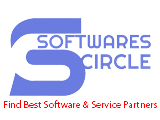Blockchain technology is a decentralized, distributed ledger technology that allows for the secure and transparent recording of transactions. It was first introduced in 2008 by an anonymous individual or group of individuals known as Satoshi Nakamoto as the underlying technology of the cryptocurrency, Bitcoin.
At its core, blockchain is a digital ledger of transactions that is maintained by a network of computers, rather than a central authority. Each transaction is verified by a network of computers, or nodes, and once verified, it is added to a block of transactions. Once a block is filled with transactions, it is added to the blockchain and cannot be altered or deleted.
One of the key features of blockchain technology is its decentralization, which means that it is not controlled by any central authority or intermediary. This makes it more secure and transparent than traditional systems. Additionally, the use of cryptographic algorithms ensures that data on the blockchain cannot be altered or tampered with.
Blockchain is a decentralized, distributed ledger technology that has gained a lot of attention in recent years due to its potential to transform various industries.
Uses of Blockchain
Financial Transactions
Blockchain technology has been used to create cryptocurrencies like Bitcoin and Ethereum, which allow for peer-to-peer financial transactions without the need for a central authority. This eliminates the need for intermediaries like banks and reduces the cost and time of transactions.
Supply Chain Management
Blockchain can be used to track and manage the movement of goods and services through a supply chain. It can provide greater visibility into the entire process, making it easier to identify and address any issues or inefficiencies.
Identity Management
Blockchain can be used to create a secure and decentralized identity management system, which can prevent identity theft and fraud. Users can control their own data and share it only with those they trust.
Voting Systems
Blockchain can be used to create secure and transparent voting systems, which can increase voter participation and prevent fraud. Each vote is recorded on the blockchain and cannot be altered, ensuring that the results are accurate and trustworthy.
Connect with SoftwaresCircle and Increase Your Business Online Visibility to Millions of Users
Get ListedSmart Contracts
Blockchain technology can be used to create smart contracts, which are self-executing contracts that automate the process of verifying and enforcing the terms of an agreement. This can reduce the need for intermediaries like lawyers and increase efficiency.
Benefits of Blockchain
Decentralization
Blockchain technology is decentralized, which means that it is not controlled by any central authority or intermediary. This makes it more secure and transparent than traditional systems.
Security
Blockchain technology is highly secure because of its cryptographic algorithms, which make it almost impossible to alter or tamper with data once it has been recorded on the blockchain.
Transparency
Transactions on the blockchain are transparent and can be viewed by anyone with access to the network. This makes it more difficult for fraudulent activities to occur, as all transactions can be traced back to their source.
Efficiency
Blockchain technology can automate processes and reduce the need for intermediaries, making transactions faster and more efficient.
Cost-Effective
Blockchain technology can reduce the cost of transactions by eliminating the need for intermediaries and providing a secure and transparent system.
Overall, blockchain technology has the potential to transform various industries by providing greater security, transparency, efficiency, and cost-effectiveness.
Blockchain technology has many potential applications beyond cryptocurrencies, including supply chain management, identity management, voting systems, smart contracts, and more. As more industries adopt blockchain technology, its potential for revolutionizing the way we do business and manage data is becoming increasingly clear.
